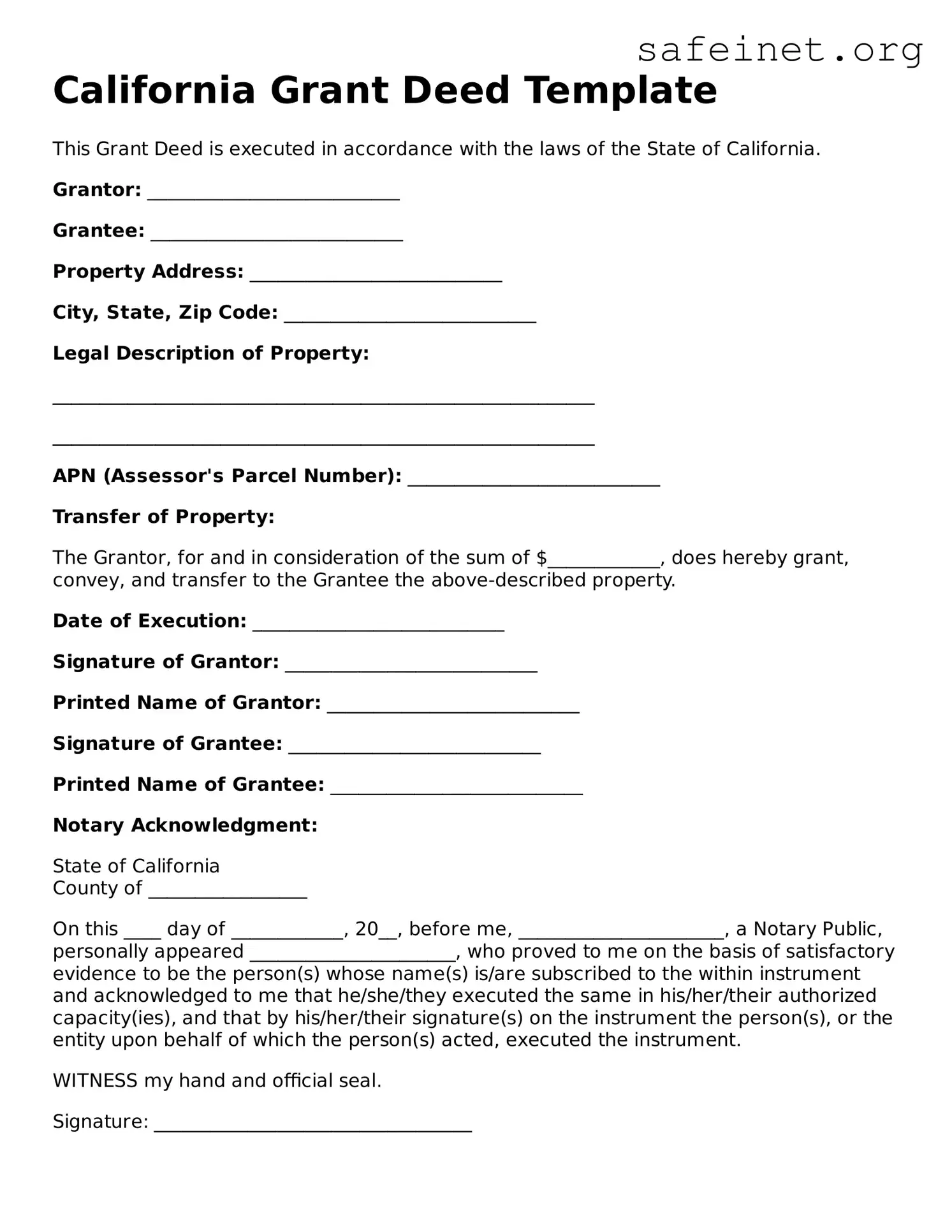California Grant Deed Template
This Grant Deed is executed in accordance with the laws of the State of California.
Grantor: ___________________________
Grantee: ___________________________
Property Address: ___________________________
City, State, Zip Code: ___________________________
Legal Description of Property:
__________________________________________________________
__________________________________________________________
APN (Assessor's Parcel Number): ___________________________
Transfer of Property:
The Grantor, for and in consideration of the sum of $____________, does hereby grant, convey, and transfer to the Grantee the above-described property.
Date of Execution: ___________________________
Signature of Grantor: ___________________________
Printed Name of Grantor: ___________________________
Signature of Grantee: ___________________________
Printed Name of Grantee: ___________________________
Notary Acknowledgment:
State of California
County of _________________
On this ____ day of ____________, 20__, before me, ______________________, a Notary Public, personally appeared ______________________, who proved to me on the basis of satisfactory evidence to be the person(s) whose name(s) is/are subscribed to the within instrument and acknowledged to me that he/she/they executed the same in his/her/their authorized capacity(ies), and that by his/her/their signature(s) on the instrument the person(s), or the entity upon behalf of which the person(s) acted, executed the instrument.
WITNESS my hand and official seal.
Signature: __________________________________
